As featured in:


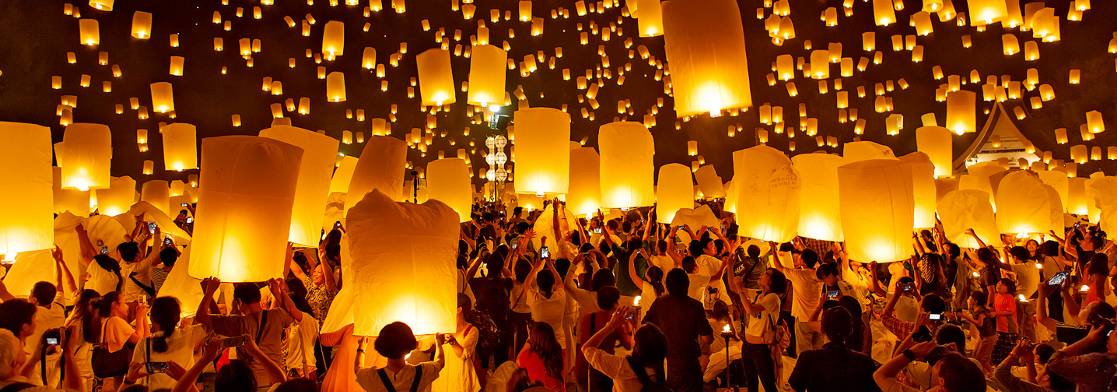


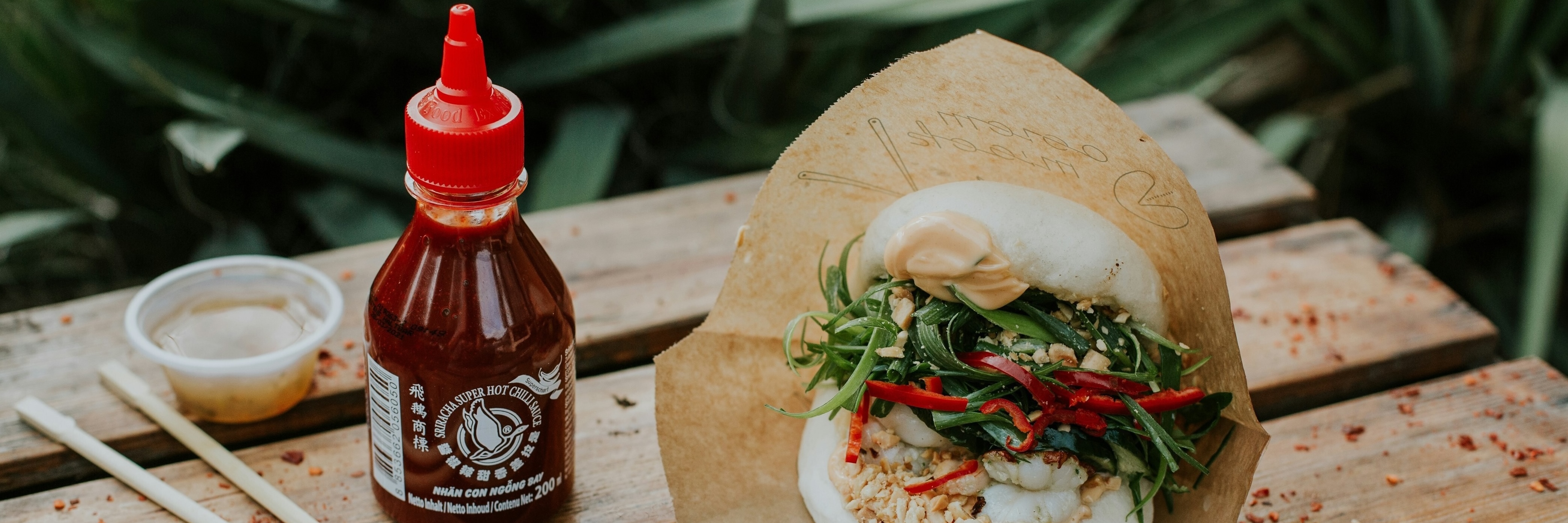












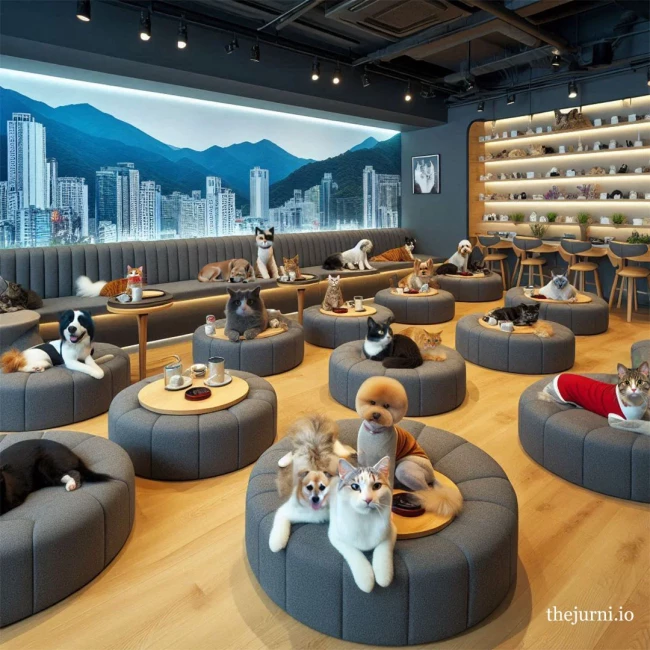
K-Pet
South Korea’s pet culture has undergone a dramatic shift. Once seen as outdoor companions, pets are now pampered family members, indulging in designer outfits, spa treatments, and gourmet meals. Social media, fueled by influencers and K-pop stars, has accelerated this trend, often turning specific breeds into overnight sensations.
Beyond its visual appeal, the pet industry in South Korea is booming. From charming cat cafés to unusual raccoon hangouts, these spaces provide city dwellers with a chance to unwind with animals amid the urban hustle. High-end pet hotels indulge four-legged guests, while luxury brands offer everything from bespoke carriers to gourmet organic treats for devoted pet owners.
The rising popularity of ‘pet-teriors’ — home designs that cater specifically to pets — highlights the significant role pets play in contemporary Korean society. With pet ownership on the rise, so is pet-related expenditure, with many individuals allocating more than 150,000 South Korean won monthly to their animal companions. This trend has spurred a flourishing pet industry, encompassing everything from high-end pet services to specialized pet products.
In a country where lifestyles are evolving rapidly, pets are fast becoming more than just companions — they’re central to how many people live, socialise, and even define their homes.
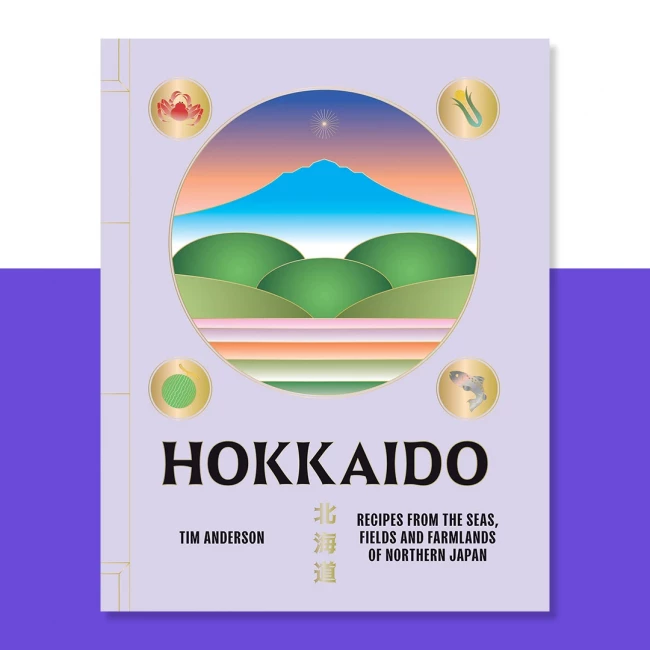
Ainu Eats
Some food cultures are instantly recognisable, while others quietly surprise you with their depth and history. Hokkaido, Japan’s northernmost prefecture, is one such place — a region where culinary traditions blend Indigenous Ainu practices with unexpected Western influences, creating a food culture unlike anywhere else in Japan.
Tim Anderson’s new book, Hokkaido, dives deep into this fascinating food landscape, revealing how the region’s volcanic soil and snowy winters have shaped not only its ingredients but also its entire food philosophy. Hokkaido’s famous kombu (sea vegetable) owes its depth of flavour to the mineral-rich waters surrounding the island, while its seafood — crab, scallop, salmon — rivals the best in Japan. Wheat plays a starring role too, making Hokkaido’s ramen heartier and its confections richer, from milk butter ice cream to airy cheesecakes.
Ainu cuisine is rooted in a deep respect for nature, where ingredients are seen as gifts from kamuy (spirit deities), and even foraging follows rituals of gratitude. Today, a renewed interest in Ainu food is emerging, with new restaurants and cooking classes at the National Ainu Museum bringing these traditions to a wider audience.
With its blend of Indigenous wisdom, international influences, and a natural bounty unlike anywhere else in Japan, Hokkaido’s food scene is finally stepping into the spotlight.
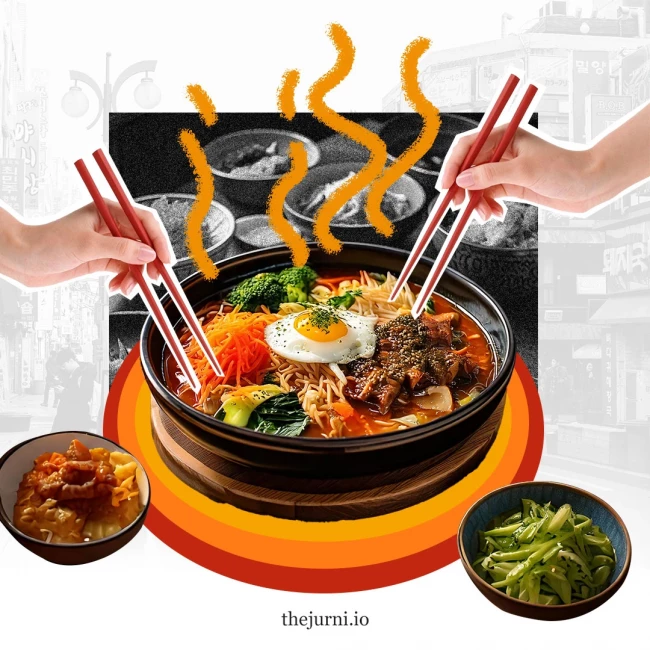
Viral Bites
Social media has turned food into a spectacle, a performance where the most dramatic, eye-catching dishes take centre stage. We’ve been eating with our eyes first, and Korean food? It’s built for the spotlight. Think of the hypnotic sizzle of samgyeopsal (meat) on a hot grill, the thick, glistening sauce of tteokbokki (rice cakes) bubbling away, or the cheese pull so mesmerizingly long it defies physics.
But it’s not just about aesthetics. Korean food thrives online because it taps into something deeper — the culture of communal eating. Mukbang, where hosts eat mountains of food while chatting with millions of viewers, was born from Korea’s dining culture, where meals are meant to be social. Even convenience store food in Korea carries a sense of play — mixing instant noodles with cheese, stacking up flavoured milks, customising dosirak lunchboxes. It all encourages interaction, and interactive food makes for viral content.
Then there’s the Hallyu (Korean Wave) effect. K-dramas weave food into their storytelling — a simple bowl of ramyeon becomes a charged moment of romance. Street food scenes become love letters to late-night cravings.
Korean cuisine has mastered the art of making people want in. It’s spicy but sweet, comforting yet adventurous, familiar yet new — just like the content we consume daily. So if you’ve ever found yourself hypnotised by someone dunking fried chicken into spicy sauce, congratulations. You’re part of the story now. And the algorithm? It knows you’re coming back for more.
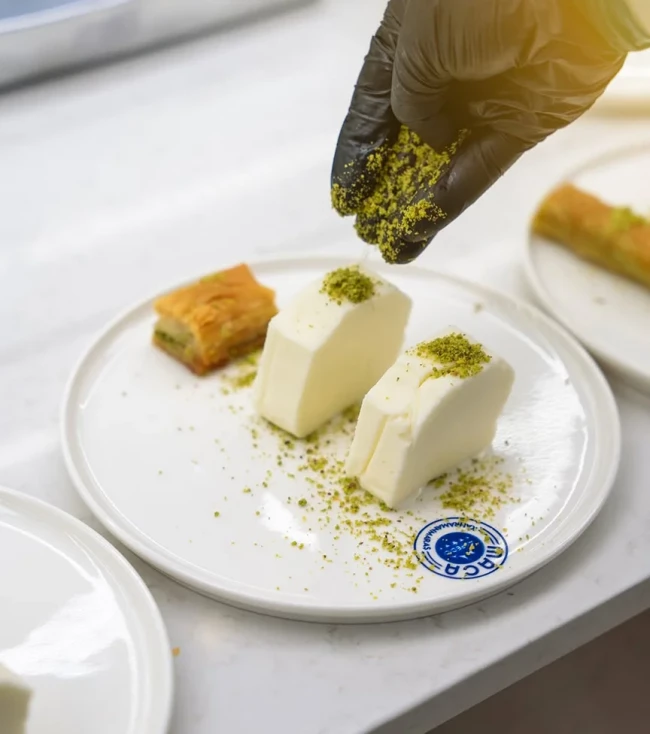
Turkish Delight
Dondurma is a real cultural treasure all the way from Türkiye that you can try as early as today. This condensed, stretchy, and resistant dessert is the only ice cream in the whole world that should be eaten with a knife and fork. Its texture, unlike any other frozen dessert, is obtained after careful processing, which also includes drying salep (orchids grown for their root tubers) for a year long in the mountainous region of Maraş.
In Istanbul, you can see dondurma masters with many years of experience around many corners. They cut big slices off cylindrical slabs and dust them with pistachio powder before serving it.
The original ingredients of the recipe call for goat’s milk, salep, and beet sugar. And you can actually make dondurma at home. If you can’t find salep, you can also replace it with corn starch. Mix your ingredients well and cook them until thickened, then cool. The trick is constant stirring to give it that right texture. After thickening, freeze the mixture and that’s all, you’re done!

Baggage Claim
Not long ago, luggage was merely a practical necessity — something to haul your stuff from point A to B. But now, it has become a part of the outfit, a travel essential that says as much about you as your destination does. Take the Indian brand Uppercase, for example, which just landed at New York Fashion Week (NYFW) last week, making it clear: suitcases aren’t just rolling behind you anymore — they’re making a statement.
This moment is about more than one brand’s success — it’s part of a broader transformation in how we approach travel. Luggage is no longer just about function; it’s an extension of identity. High-design suitcases, like those from Mokobara, have redefined travel aesthetics, blending sleek looks with smart features. Meanwhile, AI-powered suitcases are making their way into the mainstream, adding tech-driven convenience to the mix. Even luxury giants like LVMH are investing in high-end luggage, solidifying its status as a fashion essential. Uppercase’s debut at NYFW is just the latest sign that travel gear isn’t an afterthought — it’s an integral part of the way we move through the world.
Why does this matter now? Because travel itself has changed. With more people embracing slow travel, remote work, and immersive experiences, luggage is about adaptability, identity, and even aspiration. Whether it’s sleek, minimalist designs or bold, statement-making colours, what we carry reflects how we move through the world. The suitcase has evolved from a forgettable necessity to a key player in the modern travel experience — one that’s just as thoughtfully curated as the journey itself.
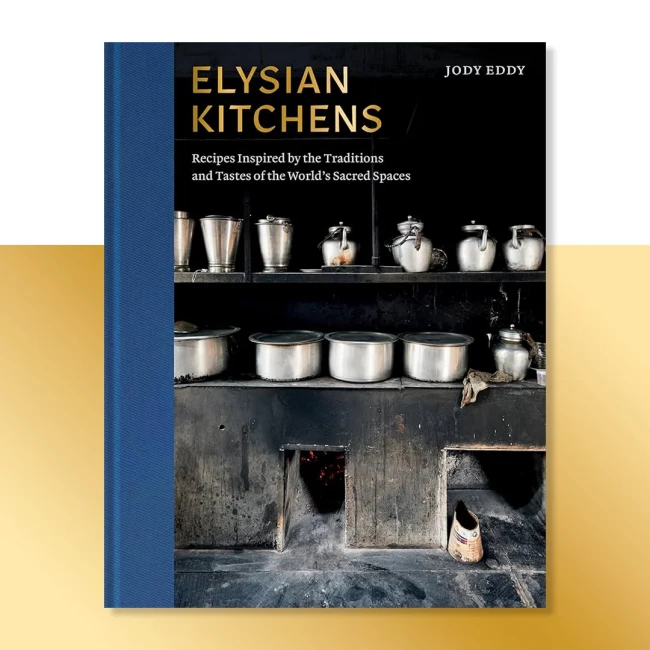
Hearth and Heritage
In the hush of a pre-dawn kitchen, steam rises from a pot of simmering rice, curling like incense into the rafters. A monk moves with quiet precision, slicing vegetables, pressing tofu, stirring a fragrant broth — every motion deliberate, every meal an act of devotion. Across the world, in a high-altitude monastery in Ladakh, another kitchen hums to life where dough is shaped into thumbprint-sized noodles and dropped into a bubbling stew thick with root vegetables.Thousands of kilometres away, in a Gurdwara in Delhi, vast tavas sizzle as golden chapatis puff over open flames, ready to be served to anyone who walks through the doors, no questions asked.
Food has always been a universal language — a bridge between cultures, traditions, and beliefs. Food writer Jody Eddy has captured this essence in her book, Elysian Kitchens – Recipes Inspired by the Traditions and Tastes of the World’s Sacred Spaces.
From a Sufi kitchen in Morocco to a Benedictine abbey in France, each sacred space carries a unique culinary tradition, bound by the same principle — food as an offering, an expression of gratitude, and a way of bringing people together.
The book is a love letter to these culinary traditions. Each recipe reminds us that food, at its heart, is a shared language — one that speaks of warmth, generosity, and the quiet magic of a meal prepared with care.
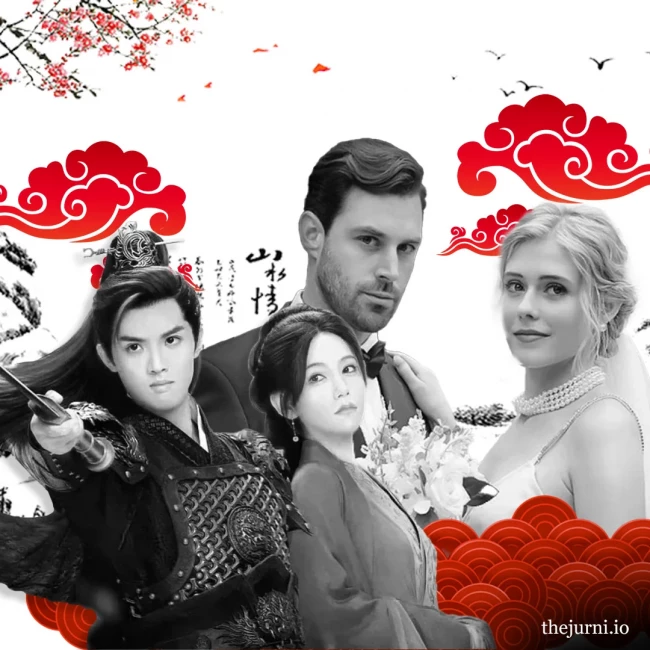
Sixty-Second Sagas
We’ve all been there — bingeing a favourite show for days, only to be left heartbroken (and existentially lost) when the season finale hits, and the next instalment is a year away — if it even happens. Not for C-Drama (Chinese Drama) fans, though. While K-Dramas, like most series, often run for an hour per episode, China’s latest obsession flips the script. With episodes just 60 to 90 seconds long, these micro-dramas pack entire sagas into bite-sized bursts, often spanning 50+ episodes.
Packed with romance, revenge, and plot twists that could make even Shakespeare dizzy, these mini-dramas are fueling China’s booming short-form industry — where high-intensity storytelling plays out in the time it takes to reheat your tea. With short-form content dominating social media, these lightning-fast C-dramas are now making their way to the world.
While traditional C-dramas are known for their sprawling epics, the rise of short-form platforms like Douyin and Kuaishou has given birth to ultra-compact series designed for the scrolling generation. No slogging through slow episodes, no waiting years for a new season — just fast, addictive storytelling that keeps you coming back for more.
Why is this working? Attention spans are shrinking, and instant gratification is king. Why commit to a 12-hour binge when you can get your dramatic fix in mere minutes? Gone are the days of waiting years for a beloved show to return.
As these micro-stories cross borders, don’t be surprised if your next guilty pleasure fits neatly between two bus stops. The age of the 60-second episode is here — and it’s moving fast.
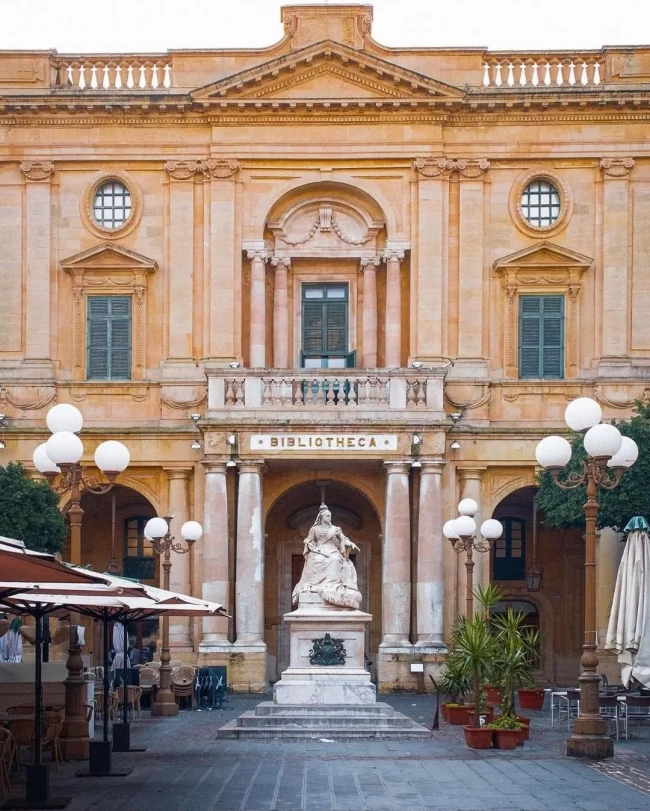
Maltese Marvels
Of all the beautiful islands that dot the Mediterranean Sea, Malta has to be among the most beautiful and enthralling ones. This island nation is known for its pretty beaches, natural harbours, and its beautiful architecture, which combines features of several different traditions. However, it is Malta’s early history that is the most fascinating and enigmatic.
The island has been inhabited since the sixth millennium BCE, which makes it among the earliest places of habitation in all of Europe. Interestingly, the first people to move there were not sailors or traders, but farmers. And after much of the island had been over-farmed, it was deserted for over a millennia, after which the first settlers to the island arrived. And the evidence for this prehistoric culture is something that will make your jaws drop.
The second wave of Malta’s settlers arrived from Sicily, and created some of the grandest megalithic temples known. The Ġgantija temple complex has the oldest free-standing building in the world, and was built in 3600 BCE. Subsequent temples, as well as a few much older ones, are dotted all over the island, and are a testament to the sustained occupation of the islands, which is very unusual for pre-Bronze Age Europe.
More than just the imposing size of the structures are the designs and the beautiful sculptures that have been found here. The temples have curved arches and differently sized rooms, and from above, they give the appearance of a human body, which corresponds with the art found here. In case you wish to get a dose of life in early Europe along with some amazing views, Malta may just be the place for you.
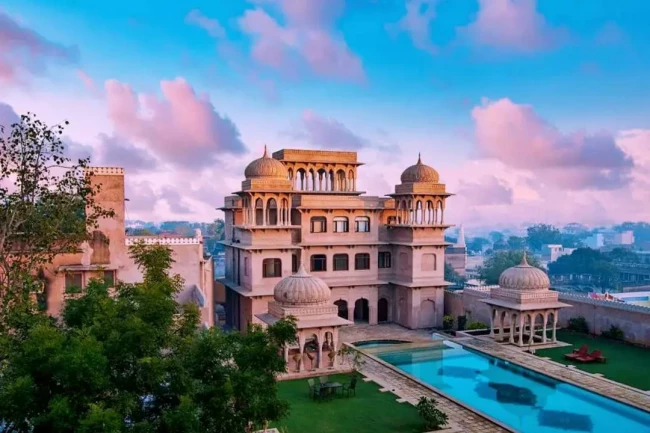
Oh, Man(dawa)
In the heart of Rajasthan, where the desert wind whispers through ochre streets, the town of Mandawa is quietly reclaiming its past. Once a thriving stop on a historic trade route, its grand havelis — mansions adorned with intricate frescoes — had fallen into neglect. But today, a revival is underway.
Local artists and restorers are uncovering centuries-old frescoes that depict tales of Rajput kings, Mughal artistry, and even colonial quirks — an Englishman with a telephone, a steam train rendered in striking pinks and reds. Some havelis, like the Gulab Rai Ladia Haveli, are being meticulously transformed into boutique hotels, offering a window into Shekhawati’s storied past. Others remain untouched, their weathered murals whispering echoes of a once-glorious era.
Mandawa’s slow-blooming renaissance is drawing those who seek culture beyond Rajasthan’s well-trodden routes. With each brushstroke and restoration project, the town is preserving its legacy while inviting the world to rediscover it.

(Pine)apple A Day
Who would’ve thought pineapple leaves could shape the future of design? In the Philippines, what was once agricultural waste is now pinyapel — a sustainable material turning up in everything from wall panels to lighting fixtures. Pinyapel, a material crafted from repurposed pineapple fibres, is redefining eco-conscious interiors with its natural texture and refined aesthetic.
The journey of pinyapel begins with locally-sourced pineapple leaves, carefully dried, pulped, and pressed into durable sheets. The result is a unique, textured material that seamlessly blends sustainability with style. Its neutral tones and natural fibres allow it to complement a wide range of designs, from minimalist to rustic.
Beyond wall panels and furniture, the material is also making its way into everyday living spaces in creative ways. It is used in lighting design, where its organic texture diffuses light beautifully, creating a warm, natural ambiance. On the other hand, some designers are experimenting with it in cabinetry and decorative partitions, offering a sustainable alternative to wood. In commercial spaces, it is finding its place in eco-friendly packaging, artisanal paper products, and even biodegradable coffee cups, reinforcing its practicality beyond interiors.
As artisans and designers continue to explore its versatility, pinyapel is becoming a statement. By transforming agricultural byproducts into purposeful design, it showcases the potential of natural resources, turning something once overlooked into something truly extraordinary.
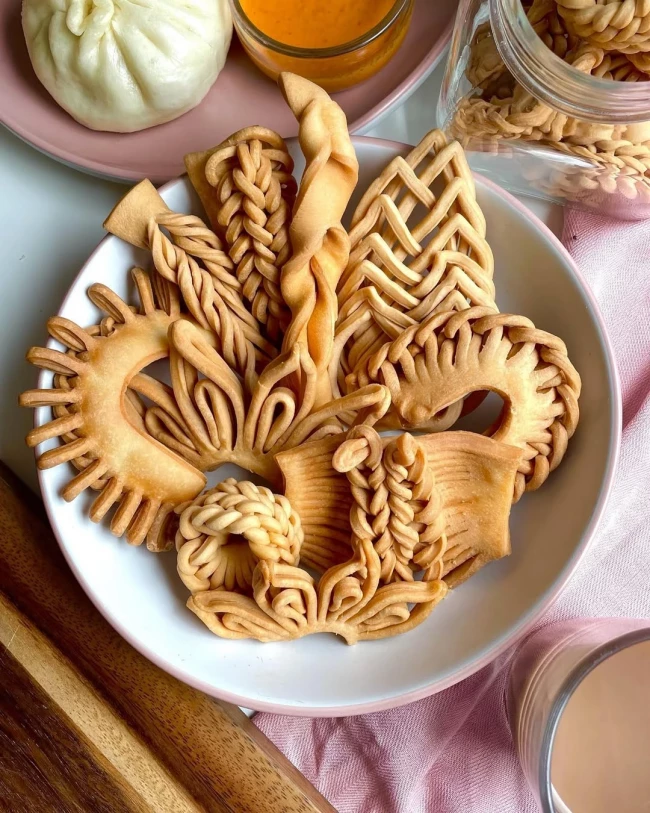
Sweet Everythings
In the high-altitude kitchens of Tibet, a sweet aroma fills the air as families prepare for Losar, the Tibetan New Year. At the heart of the celebration is khapse, a deep-fried dessert pastry that is a symbol of peace, prosperity, and the passing of time.
Traditionally shaped into intricate patterns, from simple twists to elaborate knots, khapse carries deep cultural significance. The crisp golden pastries are often arranged as offerings on altars, shared with loved ones, and even gifted to neighbours as a gesture of goodwill. For many Tibetans, making khapse is a communal affair, bringing generations together in the kitchen, reinforcing the bonds of family and tradition.
But khapse is not just confined to Tibetan homes. Across Himalayan communities, from Ladakh to Bhutan, the pastry has taken on regional variations, yet its essence remains unchanged — celebrating renewal and togetherness. Even among Tibetans elsewhere, the ritual of making khapse preserves a link to home, a reminder that food is as much about memory as it is about celebration.
Khapse stands as a quiet and powerful tradition, offering a taste of history with every crunch.

Gaming Beyond Generations
Video games have long been seen as the domain of the young, but a quiet revolution is underway — one that is reshaping how we think about play. From retirees learning to code to seniors finding unexpected joy in mobile games, older gamers are stepping into the spotlight.
Take Masako Wakamiya, an 81-year-old Japanese programmer who created a video game specifically for seniors. Her journey from coding newbie to game producer demonstrates the growing need for digital experiences tailored to older players. Gaming has benefits beyond amusement; it can improve cognitive abilities, lessen loneliness, and foster relationships between generations.
Big tech is also paying attention. Companies like Tencent are investing in accessibility, while mainstream game studios are recognising the spending power of older players. As a result, gaming is quietly weaving itself into family traditions, with video games replacing board games as a new way for generations to bond.
The stereotype of the teenage gamer is fading, making room for a broader, more inclusive gaming culture. Whether it’s word puzzles on a smartphone or RPGs on a console, one thing is clear: gaming is for everyone.
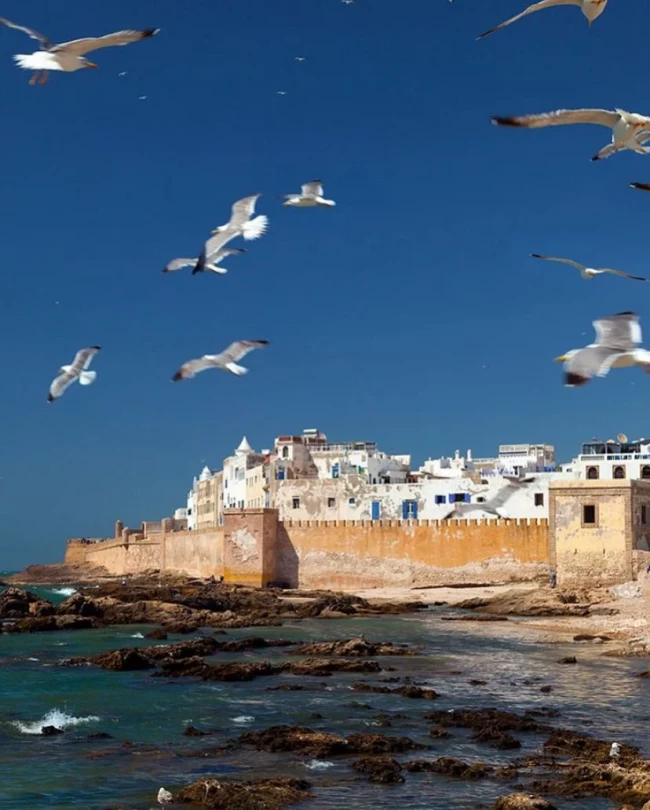
More-occo
Essaouira, Morocco’s laid-back coastal gem, has long drawn free spirits to its shores. Jimi Hendrix may not have bought the neighbouring village of Diabat, as legend suggests, but the city’s bohemian energy remains. Once a key stop on the hippy trail, Essaouira still hums with creativity, from its wood-carving artisans to the hypnotic rhythms of Gnawa music.
The city’s centre, a UNESCO World Heritage site, is a fascinating blend of influences, shaped by centuries of trade and migration. Wander through its narrow streets, past blue-shuttered shops selling thuya wood carvings and jewellery studded with semi-precious stones. At the harbour, fishermen haul in the day’s catch, while smoky grills sizzle with freshly caught sardines.
Essaouira’s windswept beaches also make it a haven for watersports. Kitesurfers dance across the waves, and camel rides along the shore offer a slower-paced alternative. As the sun sets, the city’s vibrant arts scene comes alive, whether in an exhibition at Le Real Mogador or a live jazz set at D’Jazy’s — both offering a glimpse into Essaouira’s creative heart.
Steeped in history yet undeniably modern, this Atlantic retreat is effortlessly enchanting — whether you come for the surf, the souks, or simply the salt-tinged air.

Zen Adventures
Festival travel is evolving. Once defined by music-fuelled weekends and late-night revelry, it’s now making space for something different — wellness festivals. Travellers are increasingly seeking experiences that prioritize mental, physical, and spiritual well-being over traditional leisure activities. This shift is particularly evident among younger generations, notably Millennials and Gen Z, who are redefining the concept of festivals by integrating wellness into these communal gatherings.
Wellness festivals are emerging worldwide, offering a blend of healing practices, educational talks, and community experiences. Events like Ibiza's Alma Festival combine activities such as sound healing and biohacking workshops, creating immersive environments that cater to the holistic health interests of attendees. These festivals move beyond the conventional retreat format by incorporating interactive elements like high-intensity interval training (HIIT) sessions and neuroscience discussions, fostering both personal growth and social connection.
A significant cultural shift contributing to this trend is the rise of the ‘sober curious’ movement. Many individuals, especially within younger demographics, are reevaluating their relationship with alcohol, leading to a demand for alcohol-free events that focus on mindfulness and well-being.
The convergence of wellness tourism and festival culture reflects a broader societal move towards health-conscious living and mindful consumption. As travellers continue to seek meaningful and transformative experiences, the popularity of wellness festivals is poised to grow, offering diverse opportunities for individuals to engage in self-care, community building, and personal development.
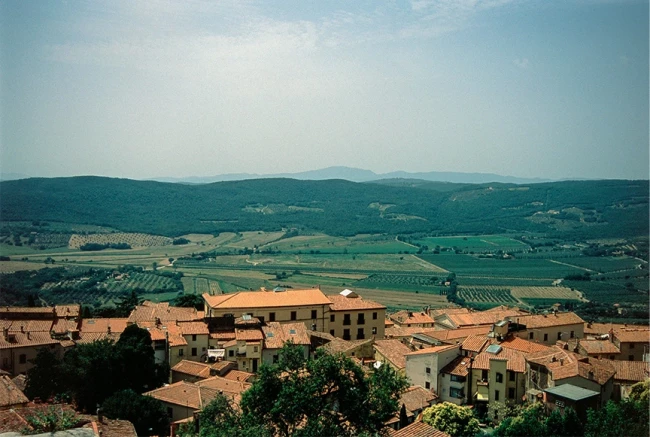
Under the Tuscan Sun
Despite Tuscany’s long-standing allure, the city of Grosseto has often been overlooked. Nestled in a region famed for Florence and Siena, Grosseto’s charm has remained a well-kept secret, even to Italians. Yet, this Tuscan gem is now stepping into the limelight, showcasing a new model for sustainable tourism.
A stay in Grosseto gives you a glimpse of a city steeped in history: mediaeval walls surrounding a centre filled with buildings of the past. But it is really the general nature of the commitment to sustainability that makes the difference. Named as a first European Green Pioneer of Smart Tourism last year, it has been recognised for its efforts in promoting responsible travel.
The environs reveal the regard the town has for nature, with the Regional Park of Maremma boasting endless pristine land tainted by open wilderness, roaming horses, and sandy beaches along the Tyrrhenian Sea.
Grosseto is a good mix of sustainable and off-beat travel — away from the crowds and yet in the lap of familiar Italian hospitality and history.
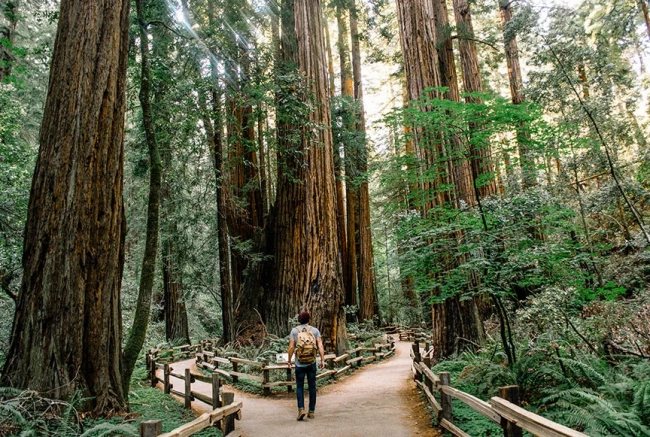
Into the Wild
Around the world, travellers are seeking experiences that blur the line between exploration and interaction, from trekking alongside mountain gorillas in Rwanda to snorkelling with whale sharks in Mexico. These journeys are about observing nature and also becoming part of it, whether by hiking through Patagonia’s wild landscapes or camping under the Northern Lights in Norway.
In Asia, this trend is taking shape in new ways. Singapore’s Rainforest Wild Asia, opening next month, reimagines the wildlife park as an immersive, choose-your-own-adventure experience. Here, you can wander forest trails, cross rocky streams, and encounter Southeast Asia’s rarest species — all within a setting that feels more like an untamed jungle than a traditional zoo. It’s part of a growing global movement to make wildlife experiences more engaging while maintaining a strong focus on conservation.
For travellers craving more than just a scenic view, these experiences offer a deeper connection with the natural world, turning a trip into something truly unforgettable.
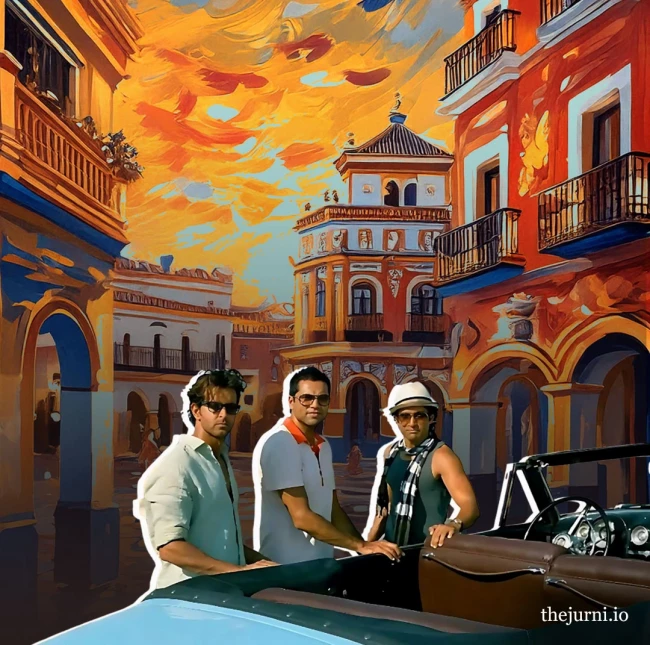
Set-Jetting
Food, music, and art have long shaped the way we explore the world, but cinema and television now play an equally essential role. From the breathtaking landscapes of Spain in Zindagi Na Milegi Dobara to Dil Chahta Hai turning Goa into the ultimate friends’ getaway, film and TV have influenced travel choices for years. Today, this connection is stronger than ever, with ‘set-jetting’ inspiring more travellers to visit destinations seen on screen.
No show recently has fueled wanderlust quite like White Lotus. Each season has turned its backdrop into a traveller’s dream. Unlike traditional sightseeing, set-jetting is about stepping into the world of a film — whether it’s sipping coffee at the Parisian café from Emily in Paris or retracing James Bond’s high-speed chases along Switzerland’s Gotthard Pass. Travel companies have caught on, offering curated itineraries to these cinematic landscapes, while destinations themselves are actively courting productions to attract tourism.
As set-jetting grows, it’s clear that storytelling has the power to turn destinations into must-visit spots, shaping how and where we explore the world.
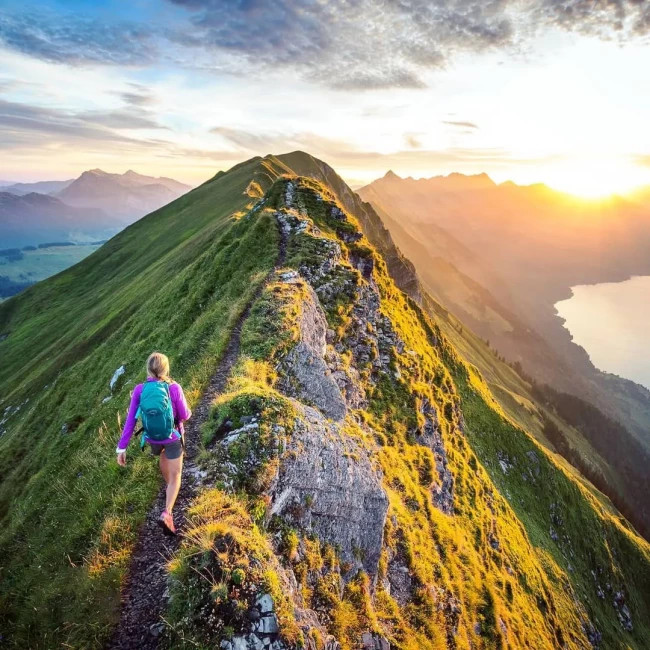
Chasing Adrenaline
Adventure travel is about stepping outside the familiar, embracing the unknown, and finding exhilaration in nature’s raw beauty. And there’s no better place to do that than Interlaken, the adventure capital of Europe.
Tucked between two shimmering lakes and framed by the snow-dusted peaks of Eiger, Mönch, and Jungfrau, this Swiss town is a living, breathing playground for thrill-seekers. Here, gravity is a suggestion — paragliders ride the thermals over emerald valleys, skydivers launch from dizzying heights with the Alps stretching endlessly below, and canyoners hurl themselves into roaring waterfalls, surrendering to the raw power of nature.
Here, adventure takes many forms. Paragliders soar over lush valleys, skydivers descend through crisp air with panoramic views of the Alps, and canyoners dive into rushing waterfalls. For those who prefer a slower pace, Interlaken offers hiking trails through alpine meadows, cycling paths that hug cliff edges, and tranquil kayaking in crystal-clear lakes.
Whether you’re free-falling from 14,000 feet or simply hiking through alpine meadows, Interlaken is a place that makes you feel alive in the purest sense — surrounded by nature, with endless possibilities ahead.
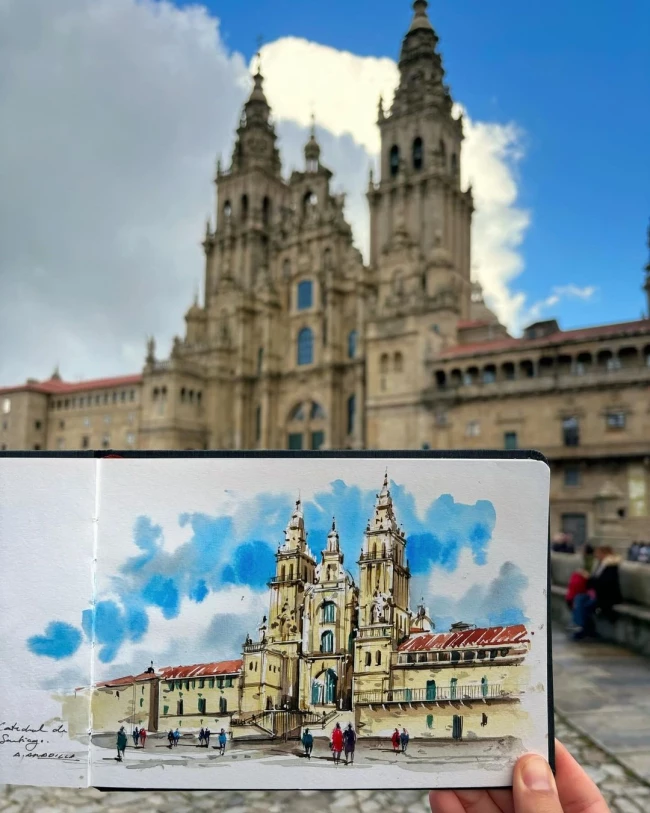
Stop and Paint
Imagine pausing in a sun-dappled piazza, the scent of espresso in the air, as you pull out a sketchbook instead of a camera. In an age of digital overload, where photos vanish into endless camera rolls, many travellers are turning to sketching as a way to slow down and truly immerse themselves. And so, the art of slow observation is being revived through travel sketching.
With travel sketching workshops popping up from Kyoto to Marrakech and pocket-sized paint kits that spring to life with a splash of water, many travellers are embracing a slower, more tactile way to capture their journeys. This analogue revival is about a break from screens, a deeper way to see the world, and a chance to engage with places beyond the lens of a camera.
A hand-drawn market scene in Marrakech recalls the rhythm of bargaining voices; a soft, pencil-shaded coastline in Santorini preserves the hush of waves against rock. In recent years, many travellers have consciously slowed down their vacations, abandoning crowded itineraries in order to fully immerse themselves in a single destination.
As digital memories fade into the endless scroll, a painted travelogue remains — a tangible keepsake, a story in strokes and colours, capturing not just what was seen, but what was truly experienced.
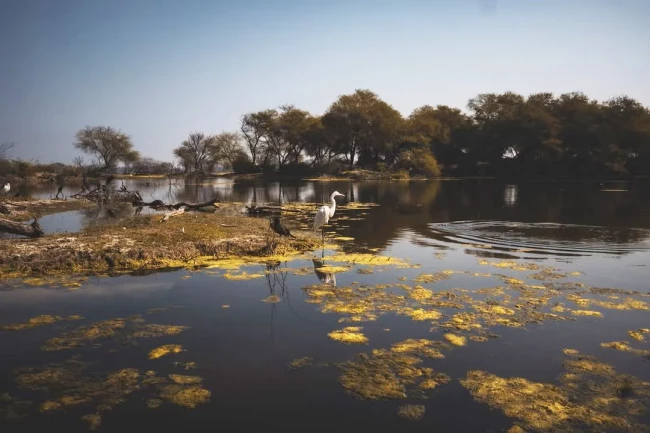
Here Comes The Bird
As winter bids adieu to India, the landscape transforms into a paradise for birdwatchers. This migratory season is as much about spotting rare species from around the world as it is a chance to explore some of the country’s most breathtaking destinations. From the misty wetlands of Bharatpur, to the vast expanse of Chilika Lake, birds arrive in droves, escaping the harsh northern winters.
One of the finest places to witness this seasonal spectacle is a former royal hunting ground in Rajasthan, Keoladeo National Park is now one of the finest places to witness this seasonal spectacle. Its marshes shelter a diverse array of birdlife, from painted storks to the rare Siberian crane. Further east, Odisha’s Chilika Lake, which isIndia’s largest coastal lagoon, comes alive with several migratory birds, including elegant flamingos, making it a prime spot for bird watching this time of year.
In the Himalayas, Pangot, near Nainital, offers sightings of rare species like the Himalayan rubythroat, while Assam’s Dibru-Saikhowa National Park is a refuge for both birds and birdwatchers alike. Even in bustling Gujarat, the salt pans of the Little Rann of Kutch come alive with greater flamingos and raptors.
For those willing to embrace early mornings and quiet patience, birding in India is a revelation — where many a rustling branch and distant call hints at a rare sighting.
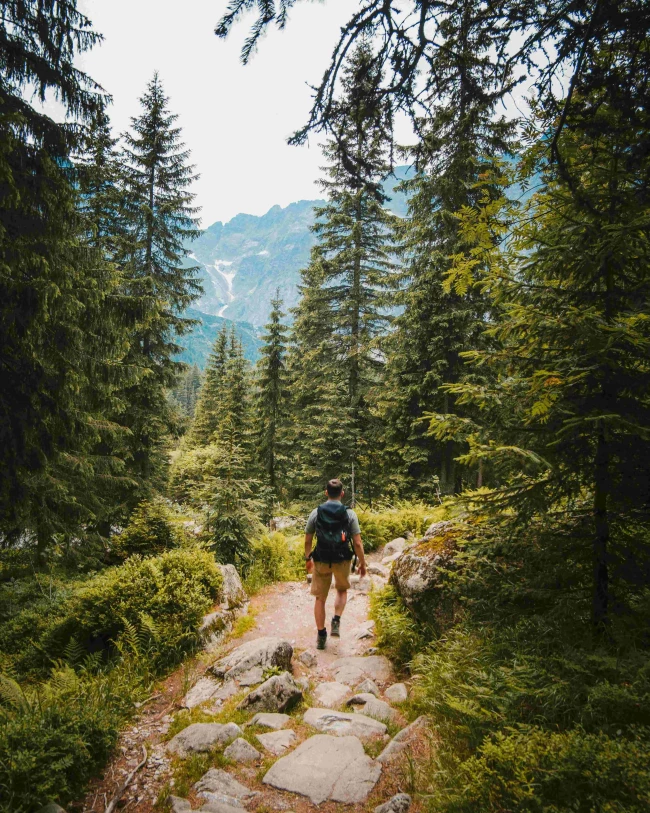
Spo(r)t on
From football fans flying across continents for the FIFA World Cup to adventure seekers rafting in Rishikesh, sports tourism is thriving. Once a niche market, it has now become a major driver of global travel, with India witnessing a remarkable surge in interest.
Broadly speaking, sports tourism falls into two categories. Passive sports tourism is about travelling to witness events — be it matches, races, or tournaments — giving host cities an economic boost. Active sports tourism, on the other hand, is all about participation, from skiing and trekking to marathon running. In India, Manali, Ladakh, and Goa have become popular choices for such experiences.
The industry is driven by the lure of experiencing live sporting moments, as well as the growing trend of combining travel with fitness. The Tour de France, for example, attracts both spectators and cyclists keen to ride the same routes as professionals. Meanwhile, Formula 1 races and cricket tours are drawing younger, more diverse travellers.
As major tournaments expand and new destinations invest in hosting, the future of sports tourism looks bright—reinforcing that, for both fans and athletes, the world is an open arena.
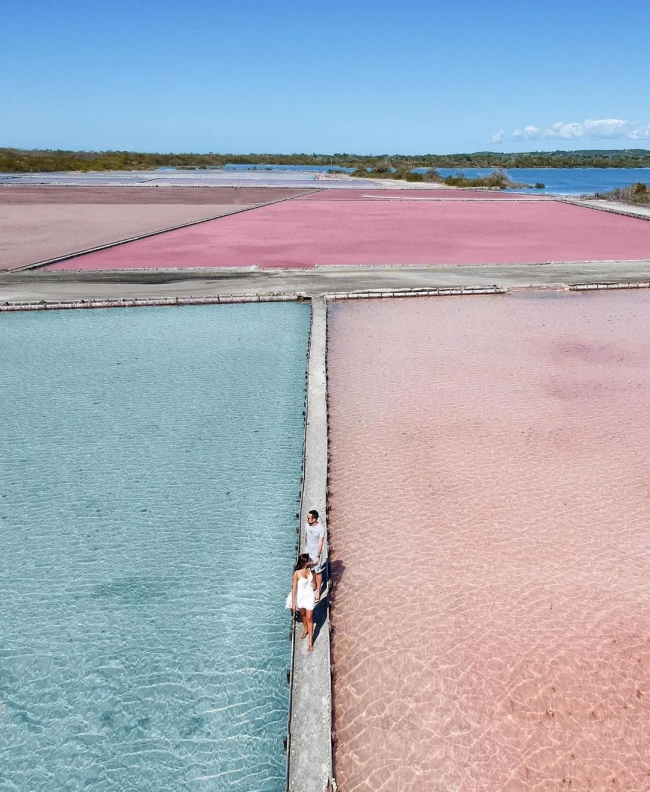
Puerto Paradise
Puerto Rico is known as the 'Island of Enchantment', and it certainly lives up to the name with experiences that extend beyond its lively cities and sun-kissed beaches. There is a wilder side to it beneath its picture-perfect exterior, where culture and nature unexpectedly converge.
The country is best experienced through its untamed, immersive adventures. Picture yourself drifting down the Tanamá River, where limestone cliffs give way to shadowy caves, or kayak past Monkey Island, home to a colony of rhesus macaques. Or, you could soak in the mineral-rich Coamo Thermal Baths, said to be the island’s fountain of youth. As night falls, maybe you can go for a paddle through one of Puerto Rico’s famous bioluminescent bays — Mosquito Bay, Laguna Grande, or La Parguera — where microscopic organisms light up the water in an otherworldly glow.
In the misty highlands of Cordillera Central, coffee farms offer a taste of Puerto Rico’s rich agricultural heritage, while the legendary ‘Pork Highway’ in Guavate invites you to savour slow-roasted lechón, a feast best enjoyed among lively crowds.
From glowing waters to rainforest trails, Puerto Rico is an immersion into a land where history, nature, and tradition blend seamlessly.
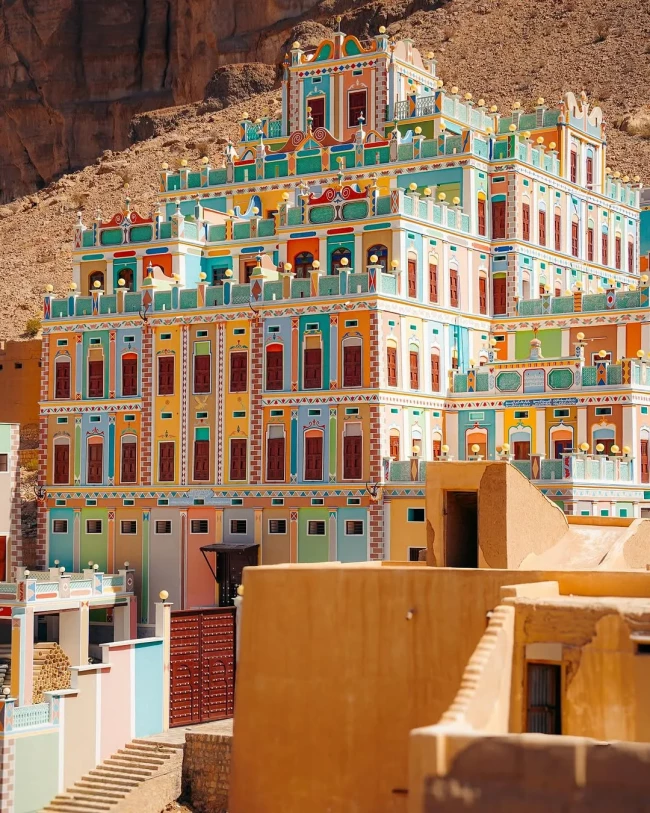
Step Up
Morning mist clings to the slopes of Haraz in Yemen as the first light catches the stone terraces, stacked like ancient stairways into the clouds. In the crisp mountain air, the scent of drying coffee cherries drifts from village rooftops — a reminder of the land’s deep connection to the world’s favourite brew. Built over three millennia ago, these terraces have shaped both Yemen’s landscape and its culture.
It was here, in the highlands, that coffee was first cultivated before making its way to Ottoman courts and European cafés. Even today, farmers tend the same stepped fields, growing wheat, qat, and the beans that fuel morning rituals across the world.
Beyond their agricultural legacy, these terraces hold a sense of timelessness. Stone villages perch on cliff edges, their houses blending seamlessly with the mountains. Life moves at an unhurried pace — farmers navigating narrow paths, coffee cherries drying in the sun, history woven into the land.
Yemen’s terraces have stood the test of time, a quiet wonder where culture and landscape are one.
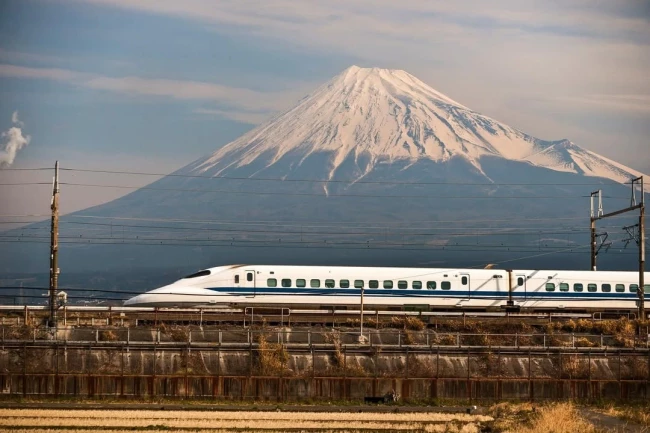
Japan’s Bullet Trains
The Shinkansen, Japan’s iconic bullet train, changed the country’s transportation landscape when it launched in 1964. Initially designed to shorten travel time between Tokyo and Osaka, it became an emblem of speed, efficiency, and technological progress. The high-speed train not only revolutionised travel, but also reshaped urban life in Japan, fostering economic growth and tourism along its routes.
The name ‘bullet train’ comes from its sleek, pointed design, reminiscent of a bullet, and reflects its speed. What makes the Shinkansen truly special is its punctuality and comfort. Over the years, the network expanded, with more cities connected, and newer trains cutting travel time even further.
The train stands as a symbol of Japan’s innovation, inspiring similar systems worldwide. Today, the Shinkansen continues to lead the way, blending modern technology with cultural significance. As new lines open, the bullet train remains central to Japan’s future of mobility, setting a global standard for high-speed rail travel. Its continued success shows how transportation can not only meet the demands of today but also shape the future.

PhD in Anthropology, Columbia University

Musician and Actor

Restaurateur

Lawyer

Accessories Designer

Singer and songwriter